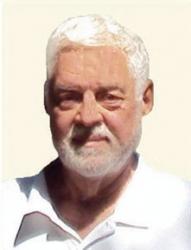The Federal Reserve System, often referred to simply as “the Fed,” is our nation’s central bank. As such, it has a great deal of influence over interest rates and the amount of money circulating in our economy.
Eighteen months ago, President Trump nominated Jerome Powell to be chairman of the Fed. But recently, he has expressed extreme displeasure with the Fed for raising interest rates last December.

The reason Trump’s threat is causing so much concern is that the Fed was designed to be independent of politics and presidents. This independence has generally been honored, and it has been widely assumed that the president does not have the power to remove the Fed chairman from office.
Perhaps the most extreme example of this occurred in the late ‘70s, when Jimmy Carter was president. Carter had nominated G. William Miller, a corporate CEO, to be chairman of the Fed, even though he had no banking or economic training. It turned out to be a disaster. Miller is considered by many to have been the worst Fed chairman ever, as he guided the nation to 20 percent inflation and 25 percent mortgage interest rates, along with rising unemployment — a condition that came to be known as “stagflation.”
Desperate to get rid of Miller but unable to fire him, Carter came up with a unique solution. He promoted Miller to Secretary of the Treasury, where he had no influence over the banking system. But this move was too late to save Carter’s re-election campaign against Ronald Regan.
But President Trump is not one to be bound by tradition. He has had his staff looking for loopholes that will allow his to fire Powell, and some think they have found one. The Federal Reserve Act of 1913 states that “each member of the Federal Reserve Board shall hold office for a term of 14 years” — since changed to four years — “from the expiration of the term of his predecessor, unless sooner removed for cause by the President.”
The question being asked by Trump’s backers is what constitutes “cause”? The phrase “for cause” basically means that the heads of some government agencies can’t be removed merely at the president’s whim or pleasure, but only for some kind of dereliction of duty. This has been upheld by the Supreme Court regarding federal agencies. But it has not been explicitly tested for the Fed because the Fed is not a government agency.
The reason the Federal Reserve System is independent of the federal government is that the Constitution of the United States stipulates that only the federal government can mint coins. This was not an oversight. The founding fathers did not trust politicians with the printing press to create paper money.
Despite this, the federal government resorted to printing money during the Civil War, and it didn’t go over very well. People did not want to accept the government money, which they derisively called “greenbacks,” because they were not backed by silver or gold — just by the green ink on the paper.
The paper bills we carry around in our pockets today are not “government money.” Take one out and look at it: across the top it clearly states “Federal Reserve Note,” and inside the seal it tells you which of the twelve Federal Reserve banks issued it. It is the Federal Reserve that has the printing press, not Congress or the president.
Thus, those who care about the Constitution and government process might see President Trump’s move to replace Powell as a power grab to get control of the nation’s printing press.
What is the mission of the Fed if it is not maximizing the president’s chances of re-election? When the Federal Reserve system was created, Congress gave it two statutory objectives: to maintain maximum employment and stable prices. This can be a delicate balancing act, because the two can sometimes conflict. Some believe that if you want to bring down unemployment, you should pump more money into the economy. But, as G. William Miller found out, pumping more money into the economy can also result in inflation. And once inflation begins, it can take on a life of its own as people spend their depreciating dollars faster and faster, creating what is called hyper-inflation.
So Fed policy is a balancing act. But is it an act best left in the hands of politicians, who generally can’t see past their next election, or an independent board of experts with a longer time horizon?
The Federal Reserve System has its critics, partisan political considerations aside. Because it is a private organization and not a government agency, it is not subject to the “sunshine laws” that require its meetings and deliberations be open to the public. Thus, Fed policy is made behind closed doors, which keeps everyone guessing what the Fed is going to do next.
It also means that the Fed’s balance sheet is not subject to public scrutiny. Last year, Sen. Rand Paul, a long-time critic of Fed secrecy — as was his father, Congressman Ron Paul — said, as he introduced a bill in the Senate to require annual public audits of the Fed, that “lasting prosperity will escape us if we do not hold the enabler of big government and our astronomical national debt accountable.”
We may need more accountability for the Fed, especially where our ever-ballooning national debt is concerned. But our long-term economic growth depends on innovation, technology and infrastructure far more than the amount of paper dollars floating around. First and foremost we need the Fed to give us a stable currency, not a short-term economic energy-boost to keep the expansion going and stock prices rising.















Comments are closed.